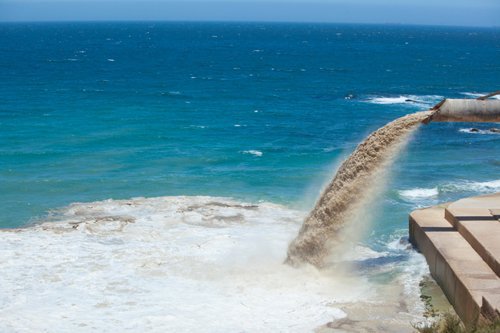Article: Lisbeth Van Cauwenberghe, Colin R. Janssen. Microplastics in bivalves cultured for human consumption. Environmental Pollution. 193 (2014) 65-70. DOI: 10.1016/j.envpol.2014.06.010
Microplastics!
As you may have learnt from previous OceanBites posts, plastic debris are ubiquitously present in the world’s seas and oceans. The distributional pattern is shown in Fig 1. Plastics tend to accumulate in the convergence zones in subtropical gyers. The amount of plastics in open-ocean surface waters is estimated to range between 7,000 and 35,000 tons.

The predominant ocean surface plastics are those smaller than 1mm in diameter (so-called microplastics); and therefore, marine organisms can ingest them easily. The plastics not only block the digestive tract but also have the potential to enter the circulation system. Microplastics also carry organic pollutants, incorporated either during manufacture (e.g. polybrominated diphenyl ethers) or from sorbing the surrounding water (e.g. polychlorinated biphenyls) to organisms.
Experiment and Results
Seafood is an important part of people’s diets worldwide, so it is crucial to understand the presence of microplastics in seafood. Van Cauwenberghe and Janssen chose to study the mussel Mytilus edulis and the oyster Crassostrea gigas because of their filter-feeding behaviors.
Scientists purchased mussels and oysters from German farms and French supermarkets, respectively. Upon arrival at the lab, scientists divided the organisms into two groups. One group went straight to extraction, while the other was treated with clean water for three days to clear their gut. Microplastics were then analyzed using a microscope.
The results show that in Mytilus edulis the average microparticles load was about 0.36 particles per gram of mussel; in Crassostrea gigas this number is higher at about 0.47 particles per gram oyster. For the group treated with clean water, there were fewer microparticles present. More interestingly, the three-day depuration process removed all large sized microparticles from Mytilus edulis and the majority from Crassostrea gigas, while small microparticles remained in both organisms.
Spectroscopic analysis was used to prove the microparticles were truly microplastics. Dye studies reveal that the pigment concurrent with the particles are most commonly used in plastics industry, indicating anthropogenic origin.
Why we are concerned?
Marine organisms could pass microplastics to us. In Europe, shellfish consumption varies by country: top consumers can be found in Belgium with a per capita consumption of 72.1 grams per day, while in France and Ireland it is 11.8 grams per day. Using the average microplastics concentration detected in this study (0.42 particles per gram of tissue), an annual dietary exposure for Europeans is 1800 microplastic particles per year at minimum.
Previous posts on ocean plastic debris:
“How Much Garbage is in the Great Pacific Garbage Patch?” – Carrie McDonough
“Waiter, there’s a whale in my soup: investigating the South Pacific garbage patch.” – Zoe Ruge
“Life in plastic, it’s fantastic – for microbes in the plastisphere.” – Cathleen Turner
“Double trouble: Marine plastic debris absorbs toxic pollutants.” – Carrie McDonough
“Increasing fiber in your diet… microplastics fiber, that is.” – Erin Markham
Caoxin is a graduate student in the Graduate School of Oceanography at the University of Rhode Island. Her research interest lies in persistent organic pollutants in the environment. When she is not doing research she likes to create new cuisines.


Thank you for you informational article! I learned a lot about plastic pollution. I have always thought that taking the plastic out of the animal is a better option but now that I see that cleaning the organism thoroughly is the best way to take out plastic from organisms. I actually did not know that most of the plastic gathers around the convergent zones and that plastic gets in to the circulation system. I actually have some questions about the concerns of plastic pollution. Do you believe there is any way to stop this from occurring? Why is the rate of plastic in Belgium very high?